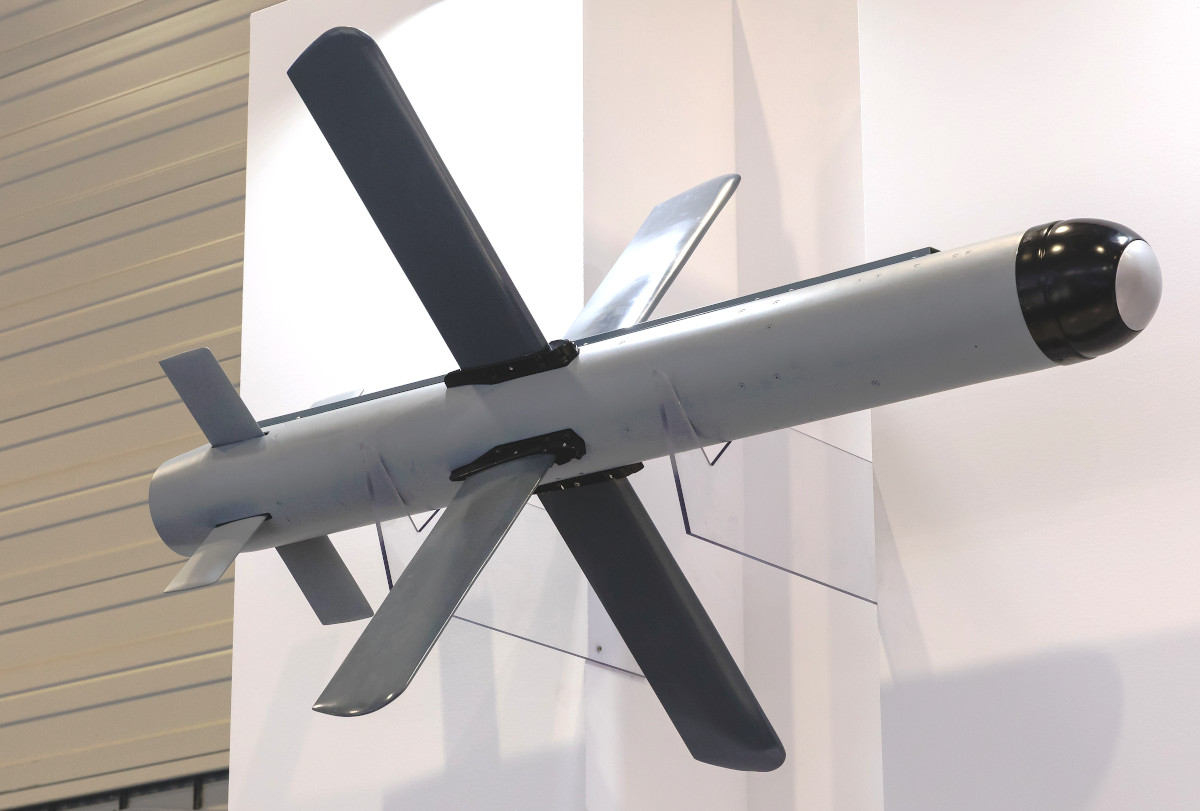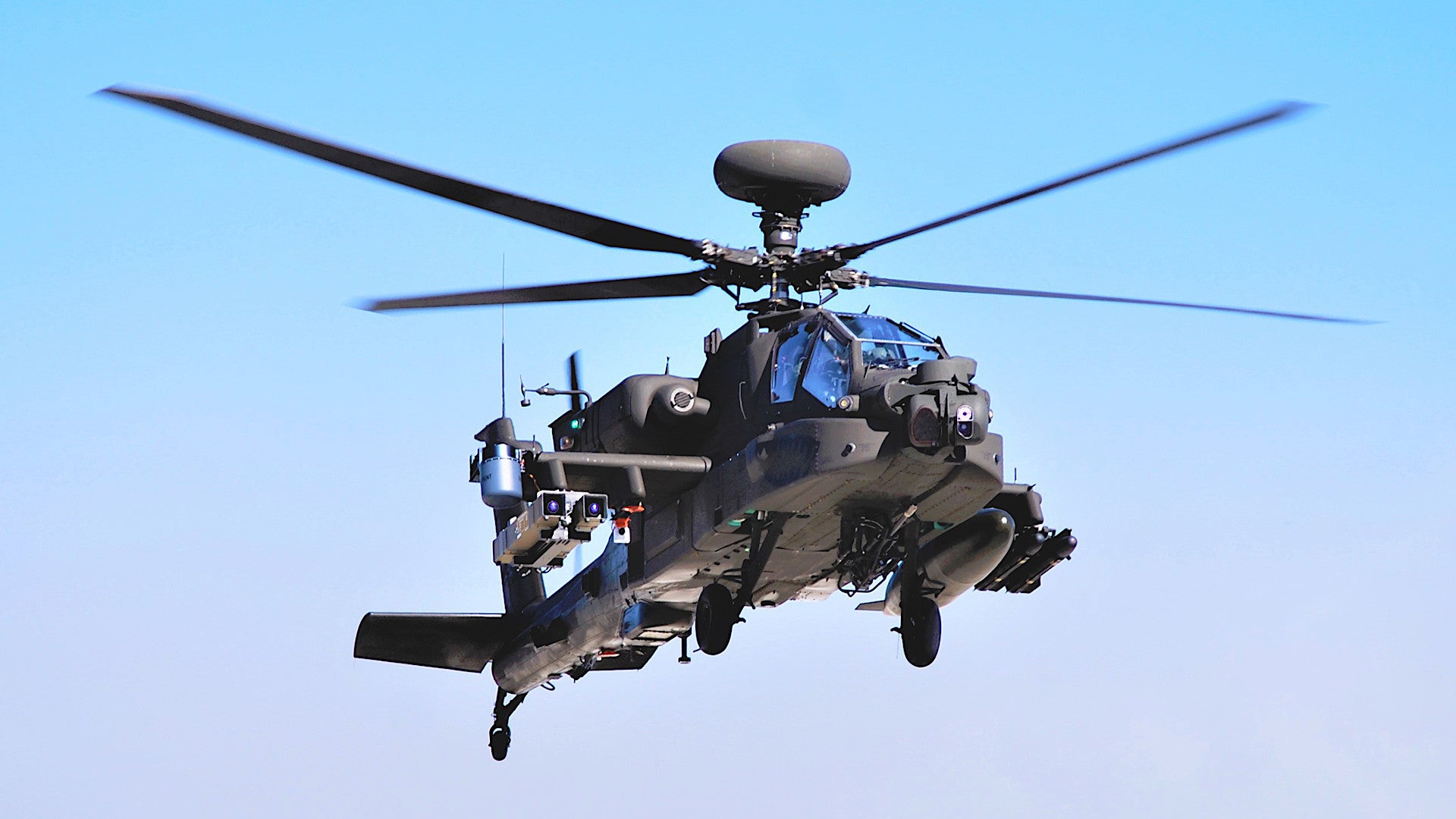The U.S. Army and Air Force have offered new details about a test involving an AH-64E Apache attack helicopter firing an Israeli-made Spike-NLOS missile off the coast of Florida last month. The War Zone was first to report that this over-water launch had occurred in the course of our efforts to confirm a separate U.S. Navy Trident II submarine-launched ballistic missile test.
The Apache, flying from Eglin Air Force Base and with support from the 96th Test Wing there, successfully fired the Spike-NLOS — this acronym standing for non-line of sight — at a stationary boat approximately 20 miles away in the second week of February. A subsequent test to demonstrate the ability to engage a moving watercraft was canceled due to adverse weather conditions.

“We were excited to test a new weapon system here at Eglin,” Amanda Hargett, a test engineer with the Air Force’s 780th Test Squadron, said in a statement released today. “Our team worked closely with the Army to make sure everything went smoothly and the demonstration was successful.”
“Modifications were made to the aircraft and the weapon was set up,” three days before the actual test launch, according to the Air Force. “Testers checked all flight and ground systems to make sure they were working correctly and with the weapon and any test telemetry added to the aircraft.”

“The test teams went through rehearsals and performed practice shots” in the days leading up to the over-water test, the service added in its official release. “This benefited the pilots and test support teams to make sure everyone knew where to be and what would most likely happen during the actual test. It also ensured all systems were working in flight and allowed the team to plan for any unforeseen emergency procedures.”
The Army has fired these missiles from AH-64s on multiple occasions since 2019. Some of the service’s personnel had traveled to Israel that year to gain experience with these weapons while flying in Israeli Apaches, which have been employing Spike-NLOS operationally for years now. The test in February does appear to be the first for the Army involving a target in a maritime environment and came just over a year after the service formally announced its plans to integrate the weapons onto its AH-64Es.

The Israel Defense Forces (IDF) reportedly first began using the first generation of Spike-NLOS missile in 1981, but its existence was not publicly disclosed until decades later. It has since been exported to multiple other countries. In June 2020, Rafael announced it was developing a fifth-generation version of the weapon, with a maximum range of 20 miles. The previous iteration could only hit targets out to around 15 and a half miles away.
Spike-NLOS’s most notable feature is its guidance system, which has two modes of operation. One of these allows it to simply strike fixed targets at designated coordinates. The other mode, however, is a so-called “man-in-the-loop” type in which an operator can make fine adjustments during the missile’s terminal phase of flight thanks to a video feed transmitted from an infrared camera in the weapon’s nose.

This gives Spike-NLOS incredible accuracy, even against moving targets, and enables it to find its mark in bad weather or in parts of the battlefield obscured by smoke and dust, which could disrupt traditional laser or imaging seeker systems. As the weapon’s name implies, it also offers a way for the launch platform to engage targets beyond-line-of-sight, while also remaining as hidden as possible, especially when coupled with targeting information from off-board platforms. It also offers the operator a greater ability to more significantly shift the weapon’s point of impact, even very late in flight, should circumstances on the ground change, such as the sudden appearance of innocent bystanders in the target area. The weapon can even be used to search for an kill targets of opportunity far from where the launch platform is located. Regardless, the missile offers the launch platform huge flexibility and a big boost in survivability.
The Army has already demonstrated the potential value of these capabilities in earlier testing. In August 2019, an Apache hiding on one side of a 1,600-foot-tall mountain at Yuma Proving Ground in Arizona hit a surrogate for a Russian-made Pantsir-S1 point air defense system on the opposite slope with a Spike-NLOS. The helicopter remained largely concealed from and out of range of this simulated threat the entire time. An unspecified unmanned aircraft was used to first spot the target and then observe the strike. This would have been an impossible task for an AGM-114 Hellfire missile, the present primary longer-range weapon employed on the Army’s AH-64Es, as well as its successor, the AGM-179A Joint Air-to-Ground Missile (JAGM). The reported maximum ranges of the latest iterations of the Hellfire and the JAGM are between five and six miles, depending on the launch envelope.

“The Spike-NLOS missile is employed differently than the Hellfire, which is one of the missiles the Army currently uses,” Army Chief Warrant Officer Five Sean Merrill, the Army’s lead test pilot and primary shooter during the August 2019 demonstration, said in a statement afterward. “I attended three training sessions at varying intervals leading up to the demonstration to learn these techniques and keep current on the methods.”
The use of a boat as the target for this latest Army Spike-NLOS test is also notable and underscores the potential contributions of the service’s AH-64Es in a maritime context. For years now, the Army, in cooperation with the Navy, has been conducting exercises involving Apaches operating from various kinds of naval vessels. Using these helicopters to help defeat hostile small boat swarms, a very real threat, has been a major focus of this kind of training.
The latest Version 6 configuration of the AH-64E already incorporates various upgrades meant to improve the helicopter’s maritime capabilities, among others, which you can read about in more detail in this past War Zone piece. Spike-NLOS, with its extended range and precision, would only expand the Apache’s capabilities in this regard, especially against small boats. It’s very possible that these missiles could find their way onto other Army helicopters, as well as other platforms, as time goes on and they could also be of interest to other services that are now looking for longer-range air and surface-launched munitions.
It is important to note that the Army does not see Spike-NLOS as a replacement for either Hellfire or JAGM. The service envisages the weapon as complementary to those missiles and as a stepping stone to a planned future Long-Range Precision Munition (LRPM) that will arm future helicopters acquired as part of the Future Vertical Lift (FVL) initiative.
The Army’s FVL plans also include developing a family of air-launched unmanned platforms capable of performing various functions, ranging from intelligence-gathering to acting as loitering munitions, while operating as autonomous swarms. You can read more about that effort, known as the Air Launch Effect (ALE) program, in this past War Zone piece. ALEs configured for intelligence, surveillance, and reconnaissance missions could be very useful for finding targets for AH-64s, or other platforms, to then engage with Spike-NLOS or the future LRPM.
In the near-term, Spike-NLOS looks set to make the Army’s Apaches more lethal against targets on land and at sea.
Contact the author: joe@thedrive.com
